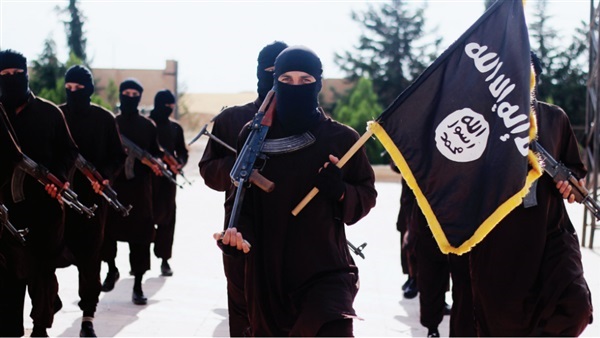ISIS FOR EVER : TO REMAIN AND EXTEND

The
self-proclaimed Islamic State(ISIS) did not, simply, come into existence when
its leader Abu Bakr al-Baghdadi announced the establishment of the so-called
Caliphate in June 2014. As a matter of fact, this organization is an extension
of al-Qaeda that has been around since 2003, in Iraq, where it was led by one
of al-Baghdadi's Sheikhs, namely, Abu Mosab al-Zarqawi.
After
pledging allegiance to Osama bin Laden, in 2004, al-Zarqawi changed the name of
his terrorist organization from al-Tawhid wal-Jihad, to Tanzim Qaidat al-Jihad
fi Bilad al-Rafidayn. In January 2006, this organization became part of the Mujahideen
Shura Council that was an umbrella organization of at least six Sunni Islamic
insurgent groups.
When
al-Zarqawi was killed in June 2006, Abu Hamza al-Muhajir was elected as new
leader of the organization. Abu Hamza al-
muhajir served as Minister of War of ISIS. He was First
Deputy of Abu Omar al-Baghdadi, who had been leader of the organization since
2006, until he was killed in 2010, when he was succeeded by Abu Bakr
al-Baghdadi.
From the
very beginning, the organization raised the slogan"remaining and
expanding". This has been the case, partially at least, in the first two
years of its life, when it managed to dominate almost half the area of Iraq and
one third of Syria. When Iraqi army troops retreated from al-Mosul without any resistance,
leaving behind them huge amounts of weapons and equipment, the city became the
capital of ISIS, that also conquered other parts of the country, including
oil-rich areas of Kirkuk and important religious centers of the Shia doctrine
including Samarra, very close to the capital, Baghdad.
Raqqa, on
the northeast bank of the Euphrates river was made the capital of ISIS in Syria.
Meanwhile, the organization controlled most of the oil-rich Deir ez-Zor, along
with parts of the countryside north of Aleppo, parts of Qalamun, northeast of
the capital Damascus and different swathes in central Syria.
The fast ascension of ISIS was equalled by a fast decline. The
organization lost most of the areas under its
control in Iraq and Syria as a result of international military intervention in
co-operation with Iraqi forces.
In Libya,
ISIS has been able to conquer only one city, Sirte in north-central Libya, and only
for one year, at the end of which the organization was forced to evacuate it
under military pressure from the pro-government forces al-Bunyan al-Marsus.
To realize
its dream of domination of the Muslim world, ISIS relies on its strategy of
spreading terror in various countries
over a number of successive stages that begin with " the yoke of vexation
and fatigue", to be followed by "management of savagery/chaos"
and finally by "assuming authority and the rise of the State". The
countries where this strategy is to be carried out should be possessed of
certain qualities, like geographic depth and a terrain conducive to management
of savagery/chaos. The political regime in a targeted country should be
fragile, threatened by a surge of Islamic Jihadism, and by arms being easily
obtainable by anyone in the country, according to the treatise authored by ISIS
prominent Jihadist chief Abu Bakr al-Naghi.
ISIS had
various sources of revenue, including covert external financial sources
secretly extended to them by governments wary of international penalties. Other
sources of revenue for ISIS came, first and foremost, from oil-rich areas under
its control in addition to trafficking in movable antiquities, unlike huge
antiquities pulled down by the organization. Bank robberies, levies and taxes
under the name of Zakat, slave trade and trafficking in persons, especially
Yazidi women, were also among their sources of revenue.
Having lost
its economic resources, its administrative structures, its military might, and
huge numbers of its cadres, ISIS has nothing left but its dream of fake
Caliphate and a few scattered remnants of its former force. Now it is facing
seven possible scenarios :
First, the
United States may officially announce that the organization has been
annihilated.
Second, new
versions of the organization may be put together, under different names, to carry
on the same role in the post-ISIS period.
Third, it
may turn out that the organization as the "State" has come to an end,
but it still exists as an idea, so as the idea may be able to "remain and
expand".
Fourth, the
organization may regroup inside one of its outside Velayats (provinces) like
Libya, Yemen, Egypt, South Asia or Afghanistan, known in the media as "Velayat
of Khorasan. This scenario may be the least possible as the above mentioned
countries do not meet the necessary criteria.
Fifth, the
organization may take up standard guerilla warfare.
Sixth, the
world community may treat "ISIS in Syria" and "ISIS in
Iraq" differently, so that different factions in Iraq may forgo their sectarianism
and gather around one cause; to rid their country of the menace of ISIS.
Seventh, to
extend savagery and chaos to new theatres in Europe and North America.





